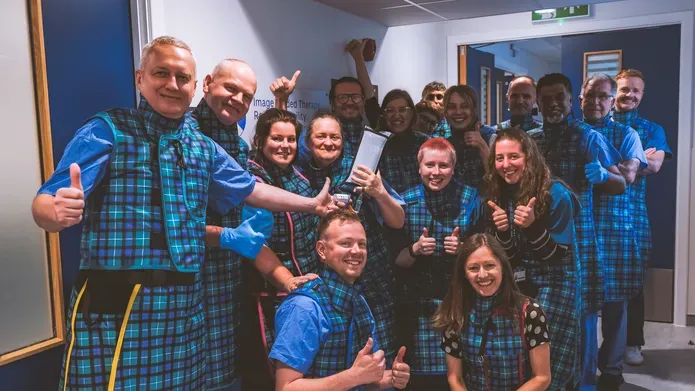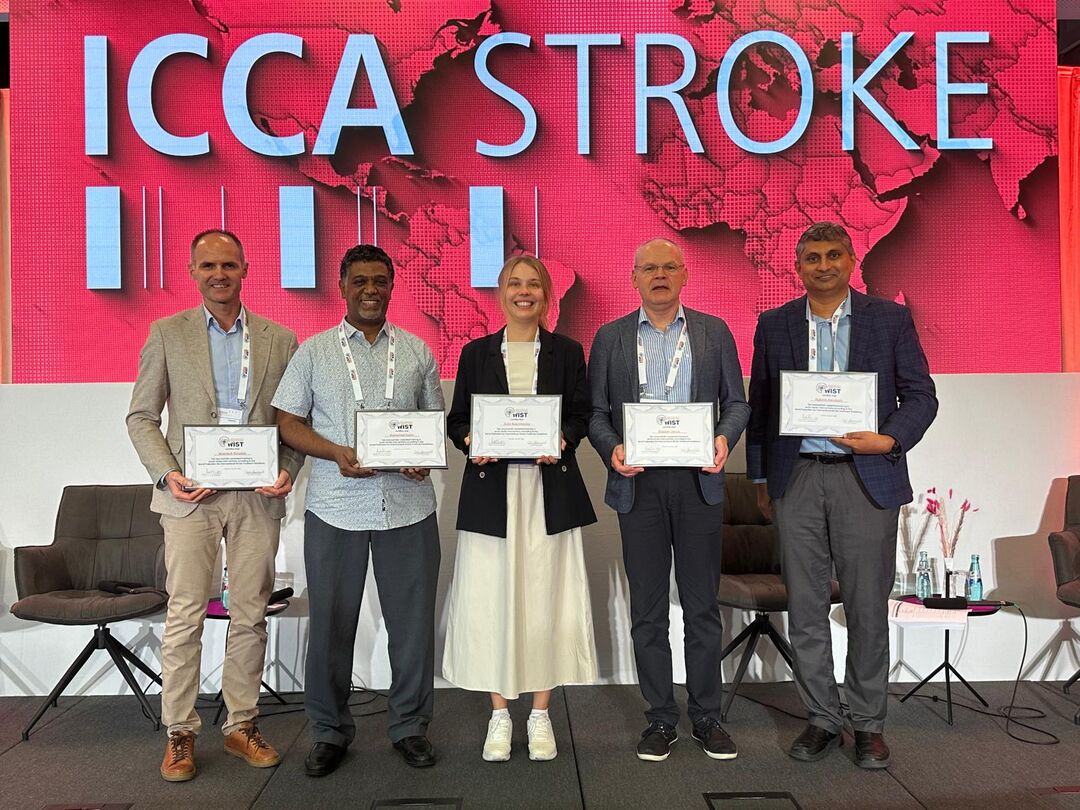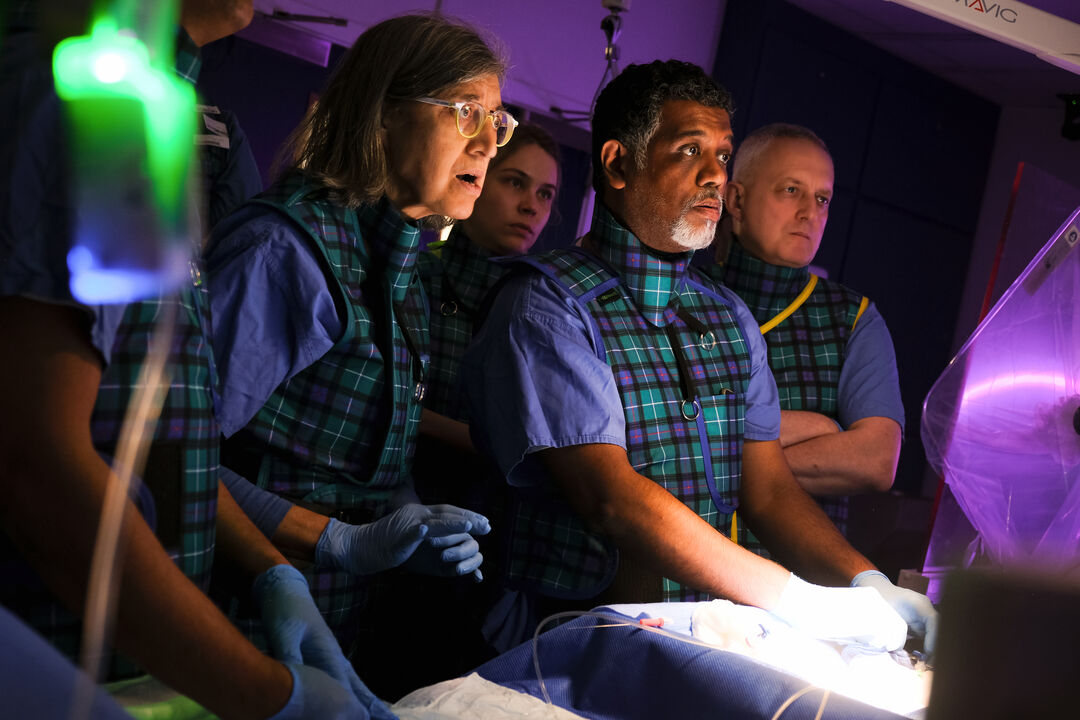News
Global clinicians gain life-saving skills at IGTRF stroke thrombectomy training
The Image Guided Therapy Research Facility (IGTRF) recently hosted a group of international clinicians for certified stroke thrombectomy training, marking a major stride in expanding access to life-saving stroke care worldwide
Published on 12 August 2025

(Prof. Piotr Musialek, Bogdan Janus, Stephanie Clark, Prof. Iris Grunwald, Lukasz Tekieli, Prof. Maria Angeles de Miquel, Anna Podlasek, Rakesh Rambally, Julia Kowalewska, Wojciech Dziadek, Mohamed Salim, Juan Rigla Cros, David Howie, Melanie Clark, Chloe Voutsas, Grant Milne, Michelle Cooper)
Trainees from Poland, Mombasa, and Trinidad and Tobago successfully completed the rigorous WIST (World Federation for Interventional Stroke Treatment) certified stroke thrombectomy training at IGTRF, following intensive sessions on high-fidelity simulation and perfused Thiel-embalmed human cadavers. This life-changing training was, and continues to be, made possible through the generosity of body donors to the Centre for Anatomy and Human Identification (CAHID). The clinicians’ achievements were confirmed at the recent ICCA Stroke conference in Frankfurt, where all five clinicians passed their WIST certification exams.

These newly trained interventionalists are now equipped to perform endovascular stroke treatment (EST), a groundbreaking treatment for large vessel occlusion (LVO) strokes, in their home countries. Their success represents more than personal achievement: it signals a turning point in stroke care for entire regions where such advanced procedures have been limited or unavailable.
“By training these clinicians, we’re not just improving outcomes for individual patients; we’re transforming national stroke care systems,” said Professor Iris Grunwald, IGTRF Director. “The ripple effect is immense. Shorter disability times, reduced healthcare costs, and most importantly, lives saved.”
Stroke remains the second leading cause of death globally, with approximately 85% caused by a sudden blockage or occlusion of an artery in the brain, according to the SVIN (Society of Vascular and Interventional Neurology) white paper. Among these, strokes treatable with mechanical thrombectomy account for roughly 30%. Since 2015, EST has become the gold standard for acute treatment of moderate to severe LVO strokes, yet access to this advanced therapy remains less than 2%.
Currently, interventional stroke centres are concentrated in a few centres across North America, Europe, Japan, and Australia, leaving vast regions, particularly in low- and middle-income countries, without access to this life-saving treatment. Financial constraints and a global shortage of trained specialists are the major barriers.
The WIST training program delivered at the University of Dundee directly addresses this inequity by equipping clinicians from different specialities with the skills necessary to perform EST. The initiative represents a crucial step toward closing the global stroke care gap.

“The human cadaveric model is very similar and very realistic to the real-life scenario. I think it is exceptional in getting us high up on the learning curve on a simulated version so that it reduces the risk of human error in the real-life scenario”. Rakesh Rambally, Vascular Surgeon, Trinidad and Tobago.
As these five clinicians have returned home, they take back not just a medical procedure, but renewed hope for thousands of stroke patients and their countries, a powerful example of how targeted global training can reshape healthcare access and outcomes around the world. Indeed, Mohamed Salim from Mombasa has already used the skills attained to perform his first, life saving thrombectomy.